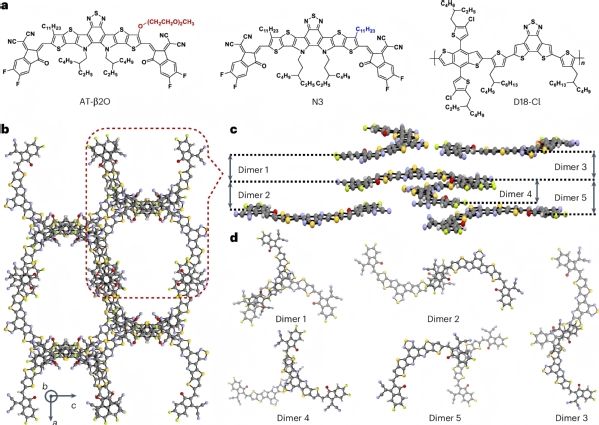Organic solar cells with 20.82% efficiency and high tolerance of active layer thickness through crystallization sequence manipulation
Haiyang Chen, Yuting Huang, Rui Zhang, Hongyu Mou, Junyuan Ding, Jiadong Zhou, Zukun Wang, Hongxiang Li, Weijie Chen, Juan Zhu, Qinrong Cheng, Hao Gu, Xiaoxiao Wu, Tianjiao Zhang, Yingyi Wang, Haiming Zhu, Zengqi Xie, Feng Gao, Yaowen Li(李耀文) ,Yongfang Li
1Laboratory of Advanced Optoelectronic Materials, Suzhou Key Laboratory of Novel Semiconductor-optoelectronics Materials and Devices, College of Chemistry, Chemical Engineering and Materials Science, Soochow University, Suzhou, China.
2Department of Physics, Chemistry and Biology (IFM), Linköping University, Linköping, Sweden.
3Institute of Polymer Optoelectronic Materials and Devices State Key Laboratory of Luminescent Materials and Devices, South China University of Technology, Guangzhou, China.
4Department of Chemistry, Zhejiang University, Hangzhou, China.
5College of Polymer Science and Engineering, State Key Laboratory of Polymer Materials Engineering, Sichuan University, Chengdu, China.
6Jiangsu Key Laboratory of Advanced Negative Carbon Technologies, Soochow University, Suzhou, China.
7State and Local Joint Engineering Laboratory for Novel Functional Polymeric Materials, Jiangsu Key Laboratory of Advanced Functional Polymer Design and Application, College of Chemistry, Chemical Engineering and Materials Science, Soochow University, Suzhou, China.
8Beijing National Laboratory for Molecular Sciences; CAS Key Laboratory of Organic Solids, Institute of Chemistry, Chinese Academy of Sciences, Beijing, China.
Nat. Mater.2025, 24,444–453
Abstract: Printing of large-area solar panels necessitates advanced organic solar cells with thick active layers. However, increasing the active layer thickness typically leads to a marked drop in the power conversion efficiency. Here we developed an organic semiconductor regulator, called AT-β2O, to tune the crystallization sequence of the components in active layers. When adding AT-β2O in the donor (D18-Cl) and acceptor (N3) blend, N3 crystallizes behind D18-Cl, and this phenomenon is different from the co-crystallization observed in binary D18-Cl:N3 blends. This manipulation of crystallization dynamics is favourable to form bulk-heterojunction-gradient vertical phase separation in the active layer accompanied by the high crystallinity of the acceptor and balanced charge carrier mobilities in thick films. The resultant single-junction organic solar cells exhibited a certified power conversion efficiency of over 20%, as well as demonstrated exceptional adaptability across the active layer thicknesses (100–400 nm) and remarkable universality. Such breakthroughs enable large-area modules with a certified power conversion efficiency of 18.04%.

Article information: //doi.org/10.1038/s41563-024-02062-0